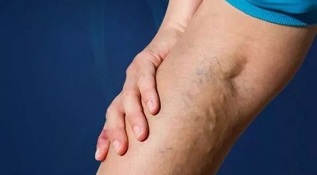
When diagnosing varicose veins, the prevention and treatment of pathology become an integral part of effective treatment. Varicose veins are easier to prevent than to cure.
Preventing varicose veins is simple and does not require significant costs, both financially and in time. Compliance with the simplest preventive measures will prevent the appearance of characteristic signs of foot disease, and after treatment of the pathology, prevent recurrence.
Who needs the prevention of varicose veins and its classification
According to official statistics, varicose veins are diagnosed in 65% of the population. The insidiousness of the pathology lies in the fact that there are no characteristic symptoms in the initial stage of the disease. This contributes to the underlying development of the pathology, in the subsequent treatment of which it will be necessary to use serious therapeutic techniques.
Varicose veins are classified as primary: they are associated with pregnancy, overweight, genetic predisposition or lifestyle and secondary, provoked by venous outflow dysfunction. Therefore, almost all people are at risk. However, people with: are more likely to develop varicose veins in the first place.- Hereditary predisposition.
- Strong physical exertion or prolonged standing.
- Mbipesha.
- Chronic pathologies of the organs of the cardiovascular system.
- Neoplasms of any etiology.
Most women need to prevent varicose veins. This is due to the fact that they often wear high heels. Also, the likelihood of developing varicose veins increases during pregnancy and during menopause.
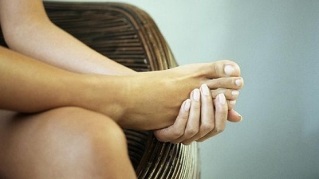
Preventing the development of any type of varicose veins is possible by using some helpful recommendations and preventative measures.
Experts classify methods of preventing varicose veins into:
- Primary.Used to prevent disease or in the early stages of its development. These include improving gymnastics, light physical activity, breathing exercises, diet and lifestyle correction.
- Secondary.Used to diagnose advanced stages of varicose veins. In this case, you can not do without medication, using traditional medicines and wearing compression stockings.
Prevention of varicose veins in the legs with medication
The modern pharmacological market is represented by a wide range of medicines, the use of which is prescribed for the prevention of varicose veins.
This group of prophylactic agents is classified into:
- Pharmaceutical products for oral administration. Their action is based on strengthening and increasing the elasticity of the venous walls, relieving the symptoms of pathology. They also have anti-inflammatory and antioxidant effects. Some medicines help to thin the blood and improve its composition.
Oral prophylaxis medications are taken only as directed by a physician.
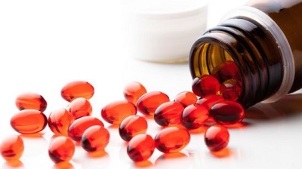
The dosage and duration of the course are chosen individually, depending on the physiological characteristics of human health.
The following drugs are distinguished among the main groups of drugs:
- A group of antioxidants.
- Group of anticoagulants and anticoagulant agents.
- Phlebotonic group.
Often, to improve the prophylactic course, taking medications of different groups is described in a complex way. Make sure you also take vitamin and mineral supplements.
- Medicines for external use. They have a local effect, directly on the affected veins. Effectively reduce the symptoms of varicose veins by diluting the blood, eliminating leg edema and relieving the severity.
Medicines for topical use have the following conditional classification:
- Hepariodes.
- Venotonic
- Pharmacological products based on bee products.
- Complex action preparations with venotonic ingredients and heparin.
Day preparations have a milder effect on the body than oral medications. Only the combined use of drugs of both groups will allow a positive preventive result to be obtained.
How to avoid varicose veins in the legs using alternative methods
Along with medicine, traditional medicine is widely used for prevention. There are many different effective recipes for making baths, compresses, rubs and tinctures.
Traditional medicines are affordable and easy to prepare and use at home without professional skills.
For preventive purposes, alternative methods are used to:
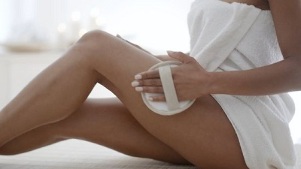
- Compresses:heating, hot, medicinal and cold. The main components can be: ginger, grapes, wormwood flowers, tomatoes, lemon juice, chestnuts, nettles, acacia. Beekeeping products, whey and onions have a high therapeutic effect.
- Preparation of oils.These medicines are based on vegetable oils or animal fats. Active ingredients can be Kalanchoe, wood lice, cabbage, celandine, wormwood or white willow bark, mummy, pumpkin.
- Tincture.Contains alcohol or vodka. Therefore, in the presence of dermatological rashes on the affected areas, the use of such funds is unacceptable. The most effective remedy is a solution based on acacia and comfrey. Aromatic rue tincture and horse chestnut are good prophylactic agents.
- Herbal decoctions and infusions.Taking oral alternative traditional medicines helps to boost the immune system, improve the functioning of the circulatory system and blood circulation. For the prevention of varicose veins, an infusion of hazelnut, dandelion root, nutmeg and Antonov apple is used.
- Friction.Special solutions are used to rub the skin into the area of the affected veins. The most effective ones are: Kalanchoe tincture, horse chestnut, or freshly prepared apple cider vinegar.
- Drawers.It is allowed to be used in the initial stage of development of varicose veins or to prevent it. The water during the procedure should not be hot. Essential oils, sea salt, garlic, flaxseed, pine extracts are added to it.
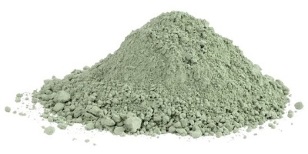
Also widely used for preventive purposes are traditional medicines prepared on the basis of laundry soap, blue clay, hydrogen peroxide, baking soda and bodyagi.
Compliance with preventive measures to strengthen venous walls with the help of folk remedies will avoid the development of varicose veins. When diagnosing varicose veins, the choice of traditional medicine should be made in agreement with the attending physician. Prevention of varicose veins in the legs: the basics of proper nutritionA properly chosen diet is an important factor in preventing varicose veins. It should include food products that cleanse, strengthen venous walls, reduce blood viscosity and at the same time improve blood flow and lymph flow through the veins. Also, with the help of correctly selected food products, it is possible to remove the swelling and correct body weight, which is an important factor in preventing varicose veins.
Basic nutrition rules for the prevention of varicose veins include the following:
- The daily menu should be dominated by fresh vegetables and fruits.
- Include fish and lean meats on the menu.
- Eat a few cloves of garlic every day.
- When choosing juices, give preference to freshly squeezed drinks.
- Eat dried fruit compotes every day.
- Eating whole grains should be alternated.
- Eating nuts, legumes and especially whole wheat is essential.
- Exclude all smoked foods, flour, fries from the diet.
- Limit salt and spices.
- Any type of seafood is ideal.
- Avoid overload.
- Drink herbal teas.
- The diet is designed to exclude the possibility of gaining extra pounds.
The most convenient food option for varicose veins is considered to be frequent small meals. It is also important to do protein-free fasting days once a week. This will increase the tone of the vessel walls and the overall condition of the body.
By following the rules of a healthy diet, you can easily restore blood flow, cleanse the body of toxins and toxins, and most importantly, minimize the load on damaged venous vessel walls.
Preventing varicose veins in women in women prevents the development of pathology complications, and also helps to prevent the development of disease and vascular damage. It is based on an integrated approach, which guarantees the high effectiveness of all preventive measures against varicose veins.























